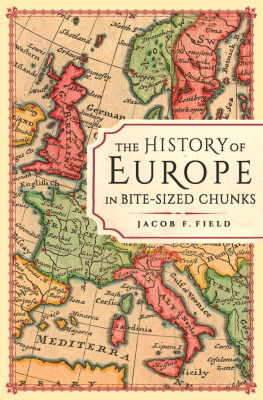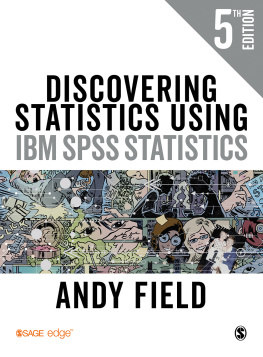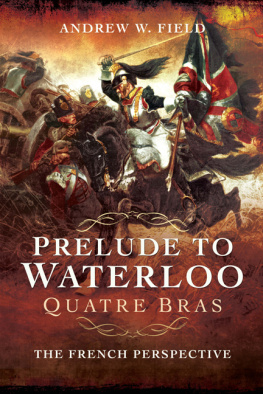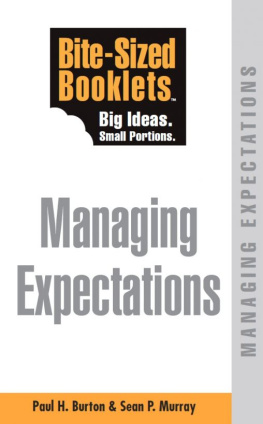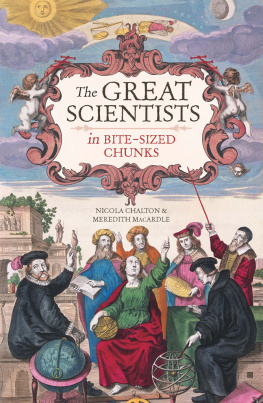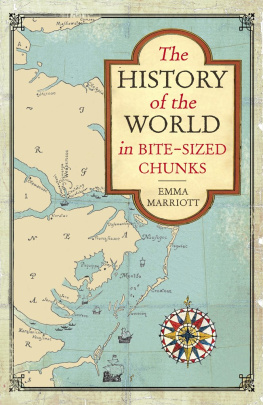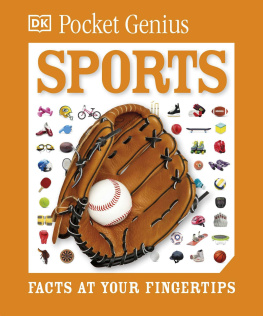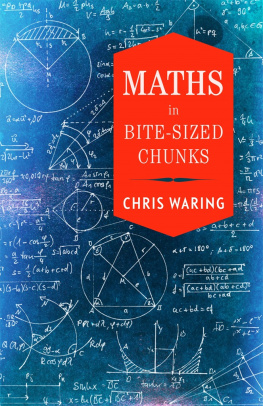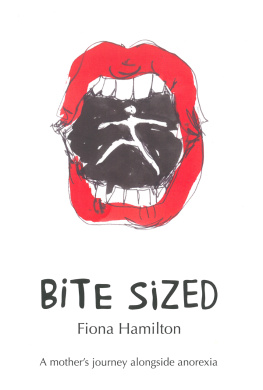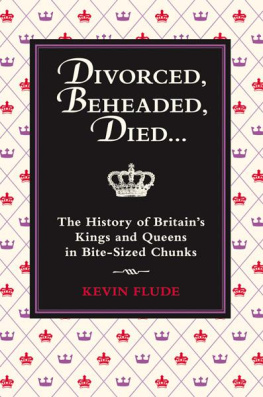Field - The History of Europe in Bite-Sized Chunks
Here you can read online Field - The History of Europe in Bite-Sized Chunks full text of the book (entire story) in english for free. Download pdf and epub, get meaning, cover and reviews about this ebook. year: 2019, publisher: Michael OMara, genre: History. Description of the work, (preface) as well as reviews are available. Best literature library LitArk.com created for fans of good reading and offers a wide selection of genres:
Romance novel
Science fiction
Adventure
Detective
Science
History
Home and family
Prose
Art
Politics
Computer
Non-fiction
Religion
Business
Children
Humor
Choose a favorite category and find really read worthwhile books. Enjoy immersion in the world of imagination, feel the emotions of the characters or learn something new for yourself, make an fascinating discovery.
The History of Europe in Bite-Sized Chunks: summary, description and annotation
We offer to read an annotation, description, summary or preface (depends on what the author of the book "The History of Europe in Bite-Sized Chunks" wrote himself). If you haven't found the necessary information about the book — write in the comments, we will try to find it.
Field: author's other books
Who wrote The History of Europe in Bite-Sized Chunks? Find out the surname, the name of the author of the book and a list of all author's works by series.
The History of Europe in Bite-Sized Chunks — read online for free the complete book (whole text) full work
Below is the text of the book, divided by pages. System saving the place of the last page read, allows you to conveniently read the book "The History of Europe in Bite-Sized Chunks" online for free, without having to search again every time where you left off. Put a bookmark, and you can go to the page where you finished reading at any time.
Font size:
Interval:
Bookmark:
By the same author:
One Bloody Thing After Another:
The Worlds Gruesome History
We Shall Fight on the Beaches:
The Speeches That Inspired History
D-Day in Numbers:
The Facts Behind Operation Overlord

This book is dedicated to the Bell Family, the greatest in-laws anyone could ask for.
First published in Great Britain in 2019 by
Michael OMara Books Limited
9 Lion Yard
Tremadoc Road
London SW4 7NQ
Copyright Michael OMara Books Limited 2019
All rights reserved. You may not copy, store, distribute, transmit, reproduce or otherwise make available this publication (or any part of it) in any form, or by any means (electronic, digital, optical, mechanical, photocopying, recording or otherwise), without the prior written permission of the publisher. Any person who does any unauthorized act in relation to this publication may be liable to criminal prosecution and civil claims for damages.
A CIP catalogue record for this book is available from the British Library.
ISBN: 978-1-78929-053-0 in hardback print format
ISBN: 978-1-78929-054-7 in ebook format
Maps by David Woodroffe
www.mombooks.com
In simple geographical terms Europe is the western part of the Eurasian land mass, along with the islands in the oceans and seas that adjoin it. Europes eastern border is fairly arbitrary its border with Asia is usually defined by the Ural River, Black and Caspian Seas, and the Turkish Straits. This book begins five millennia ago, during the Bronze Age, when the first European civilizations began to emerge. It then extends all the way to the first decades of the twenty-first century. To allow the reader to gain an understanding of such a broad sweep of history, the book is divided into bite-sized chunks. Each one explores an aspect of European history, be it political, social, religious, economic, or cultural. Some examine important events, themes, or periods in detail, while others provide mini-biographies of some of the Notable Europeans who have shaped the continent. The chunks can be read in isolation, but also form part of an overarching narrative.
An appreciation of the breadth and scale of European history is a vital factor in understanding the histories of the states and regions that make up the continent. They have never existed in isolation, and their interactions have done much to shape their development over time. These interactions have sometimes been violent but they have been outweighed by episodes of transnational collaboration and cultural exchange. Furthermore, while European powers no longer dominate the world through their empires and colonies, their legacy is felt everywhere; be it in laws, constitutions, languages, religions, or technologies. Europes history still interacts with and impacts on modern politics; its legacy is inescapable.
The History of Europe in Bite-Sized Chunks will give the reader an understanding of the story of a continent where some of the most significant events in human history have occurred. There have been savage wars, selfless heroes, notorious villains, high-minded idealism, wanton violence, groundbreaking innovations, great works of art and numerous catastrophes. They are all contained within the history of Europe, and in this book.
T HE M INOANS
Crete was the centre of the Minoan civilization, a Bronze Age people named after Minos, the mythical King of Crete who kept a labyrinth in which he sacrificed victims to the Minotaur, a monstrous creature, half-man, half-bull. During the third millennium BC the Minoans began to make bronze tools and weapons as well as sophisticated glazed pottery and golden jewellery. They developed a hieroglyphic writing system (now known as Linear A) and traded across the Mediterranean, particularly with the Egyptians to the south. From 2000 BC the Minoans constructed a palace complex at Knossos, around which developed the first city in Europe. Later, they built other palace complexes on Crete, including Phaistos, Zakros and Malia.
Although a massive earthquake devastated Knossos in 1720 BC , a larger and more elaborate palace was rebuilt on the site over subsequent centuries. It was used for both administrative and ceremonial purposes, as well as housing workshops, residences and storage basements. When the complex was excavated by archaeologists in 1900 rich fresco wall-paintings were uncovered. Both secular and religious in content, they showed naturalistic images of animals, plants and people. One of the most famous depicts bull-leaping, an athletic religious ritual where the celebrants grasped the horns of a bull and then vaulted over it (a similar practice still takes place in south-west France). By the seventeenth century BC Knossos population may have been as high as 100,000.
The Minoan civilization reached the peak of its influence in the sixteenth century BC , when it spread out to Cyprus and other islands in the Aegean as well as to the Greek mainland, where it influenced the Mycenaean peoples. In around 1500 BC Minoan civilization began to decline. One of the causes may have been a major earthquake off Cretes coast. This weakened the Minoans and allowed the Mycenaeans to conquer Crete and become the dominant force in the region. In 1400 BC a fire destroyed the great palace at Knossos; the city continued to be inhabited, but it diminished in both size and importance.
T HE P HOENICIANS
Europes first great commercial power was Phoenicia, which built a trading network that stretched across the Mediterranean from modern-day Lebanon to southern Spain. During the second and first millennia BC it established coastal trading colonies in the Levant, North Africa, Italy and Spain. Rather than being a formal empire, the Phoenicians were a loose alliance of city-states. Using their skill as navigators and shipbuilders, they traded in luxury items such as cedarwood, wine, ivory and glasswork. Some of their goods were transported as far north as Britain, where they were probably exchanged for tin mined there. The Phoenicians were most famed for their dyed textiles. The most sought-after and costly dye was Tyrian purple, which was made using the secretion of sea snails, and first manufactured in the city of Tyre (in modern-day Lebanon). It was so prohibitively expensive that only the elite could afford it, and the colour purple soon became associated with royal or imperial status.
For all of their economic might, the Phoenicians greatest contribution to the development of European history was their alphabet, which was in use by the eleventh century BC . Unlike more complex systems that used hundreds of different pictograms or hieroglyphs to record information, the Phoenician alphabet was made up of just twenty-two letters. This meant that it was far easier to learn and use. As such, it became the basis for most Western alphabets, including the Roman, Greek and Cyrillic ones.
T HE M YCENAEANS
From 2200 BC Indo-European peoples began migrating to mainland Greece. Thanks to their skill as warriors and weapon-makers they were able to establish tribal monarchies. They then solidified their control by building fortified citadels at strategic locations across the countryside. By around 1600 BC many of them had grown into cities such as Tiryns, Pylos and Midea. The most important of these early settlements was Mycenae, for which the civilization was named. The acropolis (from the Greek for highest city) there was constructed on a hill in the north-eastern Peloponnese that commanded the surrounding plains, and was protected by formidable walls made of stone blocks. The Mycenaeans also traded with nearby peoples such as the Minoans, who became a major influence, particularly on their artwork. During the mid-fifteenth century BC the Mycenaeans conquered Crete, supplanting the Minoans to become the dominant force in the Aegean with colonies in Cyprus, Rhodes, Italy and Anatolia. The Mycenaean writing system, now known as Linear B, spread across the region; it used around ninety different signs to represent syllables as well as hundreds of pictorial characters for objects.
Next pageFont size:
Interval:
Bookmark:
Similar books «The History of Europe in Bite-Sized Chunks»
Look at similar books to The History of Europe in Bite-Sized Chunks. We have selected literature similar in name and meaning in the hope of providing readers with more options to find new, interesting, not yet read works.
Discussion, reviews of the book The History of Europe in Bite-Sized Chunks and just readers' own opinions. Leave your comments, write what you think about the work, its meaning or the main characters. Specify what exactly you liked and what you didn't like, and why you think so.

